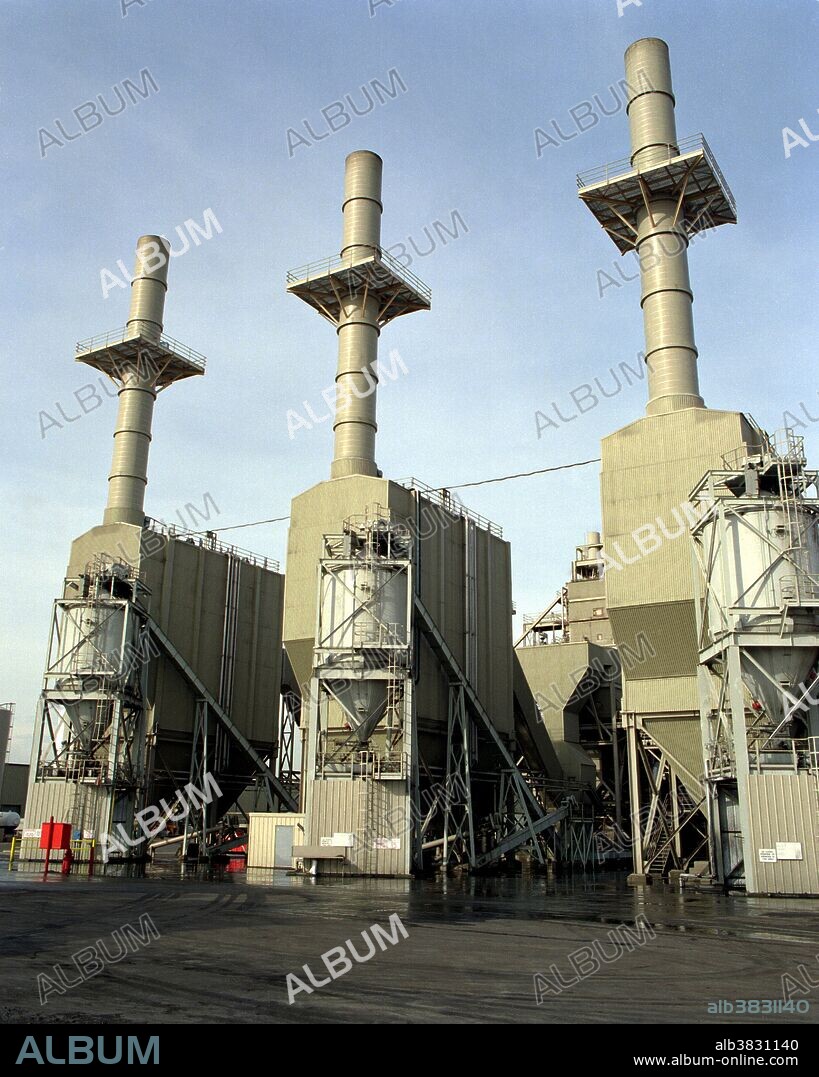alb3831140
Biomass, Wheelabrator Shasta Power Plant

|
Add to another lightbox |
|
Add to another lightbox |



Title:
Biomass, Wheelabrator Shasta Power Plant
Caption:
A close-up view of the power plant at the Wheelabrator Shasta Energy Company, Anderson, California - a 50 megawatt power plant. The Wheelabrator Shasta Energy Company uses three burner / boilers and steam turbines to convert residues from lumber waste and pulp paper (biomass) and agricultural residue into electricity. Use of biomass contributes to the local economy by creating jobs, ensuring domestic energy supplies, and providing an efficient and cost-effective source of energy. Biomass is biological material derived from living, or recently living organisms. It most often refers to plants or plant-based materials which are specifically called lignocellulosic biomass. As an energy source, biomass can either be used directly via combustion to produce heat, or indirectly after converting it to various forms of biofuel. Conversion of biomass to biofuel can be achieved by different methods which are broadly classified into: thermal, chemical, and biochemical methods.
Credit:
Album / Science Source / Warren Gretz/NREL/DOE
Releases:
Model: No - Property: No
Rights questions?
Rights questions?
Image size:
3360 x 4200 px | 40.4 MB
Print size:
28.4 x 35.6 cm | 11.2 x 14.0 in (300 dpi)
Keywords:
1991 • 20 XX TWENTIETH CENTURY • 20TH CENTURY • 20TH • 50 MEGAWATT POWER PLANT • ALTERNATIVE ENERGY • AMERICA • AMERICAN • ANDERSON • BIOFUEL • BIOMASS POWER PLANT • BIOMASS POWER PROGRAM • BIOMASS • CALIFORNIA • ELECTRIC POWER STATION • ELECTRICAL • ELECTRICITY • ELECTRICITY: POWER PLANT • ENERGIA • ENERGY CONSERVATION • ENERGY SOURCE • ENERGY • ENVIRONMENTALLY FRIENDLY • INDUSTRIAL • INDUSTRY • POWER PLANT • RENEWABLE ENERGY • SCIENCE • SUSTAINABLE ENERGY • TECHNOLOGICAL • TECHNOLOGY • TWENTIETH CENTURY • UNITED STATES • US • USA • WHEELABRATOR SHASTA ENERGY COMPANY • WHEELABRATOR SHASTA POWER PLANT
 Pinterest
Pinterest Twitter
Twitter Facebook
Facebook Copy link
Copy link Email
Email

